How do we adapt to the autumn months?
We might miss the heat of summer, or welcome the cooler days. We might look forward to winter festivities, or dread the darker days.
The changing of the seasons can affect us in many ways. Some of these are more practical and physical, such as the wet weather influencing our choices of clothing and activities, or the effects of shorter days on our energy and sleep. These transitions can affect us emotionally as we adjust to less daylight and adapt our daily habits to the onset of winter.
Some people find these changes strongly affect their moods: if you experience symptoms of seasonal affective disorder, including persistent low mood, feelings of hopelessness and changes in appetite and sleep, please do contact your GP for advice on how to manage through the winter months.
Spending time outdoors might be harder as the days are darker and shorter, but all the more important for its restorative properties and to maintain our connection to nature, inner and outer. Research by the Mental Health Foundation suggests aiming to spend two hours each week in nature, both for our own health and to foster our connection with the rest of nature - of which we are a part. (https://www.mentalhealth.org.uk/our-work/research/nature-how-connecting-nature-benefits-our-mental-health)
Any season can hold emotional associations, some personal such as anniversaries, some cultural, for example, festivals and religious ceremonies, and some we find in the cycles of nature and their meaning for us.
The following ideas for a regular autumnal walk are prompts to help you explore your relationship with the season, the associations and meanings it holds for you - while providing you with some time outdoors in nature.
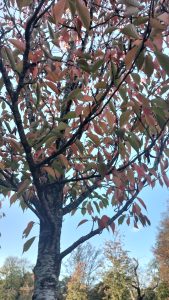
Find somewhere to walk near some trees.
Notice your sensations as you walk.
Listen for sounds of leaves, blown by the wind or trodden underfoot.
Feel the ground underfoot (leaves, wet or dry, grass or muddy earth?).
Notice the scents in the air and its touch on your cheeks.
Look for the colours in the leaves and notice the shades of different trees as you walk.
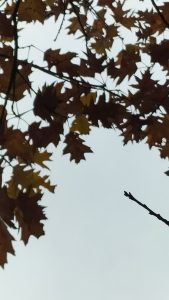 Look up at the shapes of the remaining leaves above.
Look up at the shapes of the remaining leaves above.
Notice the light let through by the gaps left by falling leaves. Look for patterns and shapes in the bare branches.
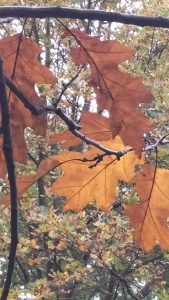 Pick up a fallen leaf. Look at its shapes and colours. Feel it in your hands: is it crisp, dry, cold, supple…?
Pick up a fallen leaf. Look at its shapes and colours. Feel it in your hands: is it crisp, dry, cold, supple…?
What associations do falling leaves have for you? Perhaps thoughts of transience, or age, of a letting go, or a way to preserve energy for the season ahead?
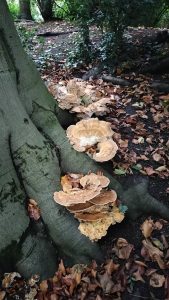 See if you can spot any signs of autumn harvest: perhaps fungi, berries, or nuts.
See if you can spot any signs of autumn harvest: perhaps fungi, berries, or nuts.
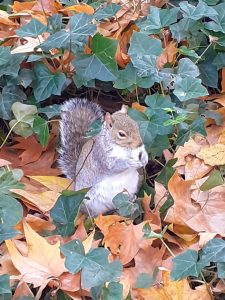 Perhaps you'll see some of the birds and animals who depend on them, stocking up for winter. What might you do to prepare for the autumn and winter months ahead? What are your strengths and resources? What do you enjoy?
Perhaps you'll see some of the birds and animals who depend on them, stocking up for winter. What might you do to prepare for the autumn and winter months ahead? What are your strengths and resources? What do you enjoy?
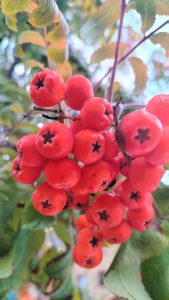 What are you looking forward to in the coming months? Perhaps festivities and holidays, perhaps snuggling up somewhere warm. perhaps more time outdoors...
What are you looking forward to in the coming months? Perhaps festivities and holidays, perhaps snuggling up somewhere warm. perhaps more time outdoors...
As you continue your walk, notice the piles of leaves where children play, homes to insects, shelters for hibernating animals, mulch and compost for the trees’ new growth. Note the colours and shapes on your way. What do the leaves strewn on your path symbolise, for you?
If you repeat the same route regularly throughout the autumn and winter, you might notice the changes in colours, shapes, scents and sounds, with the seasons.